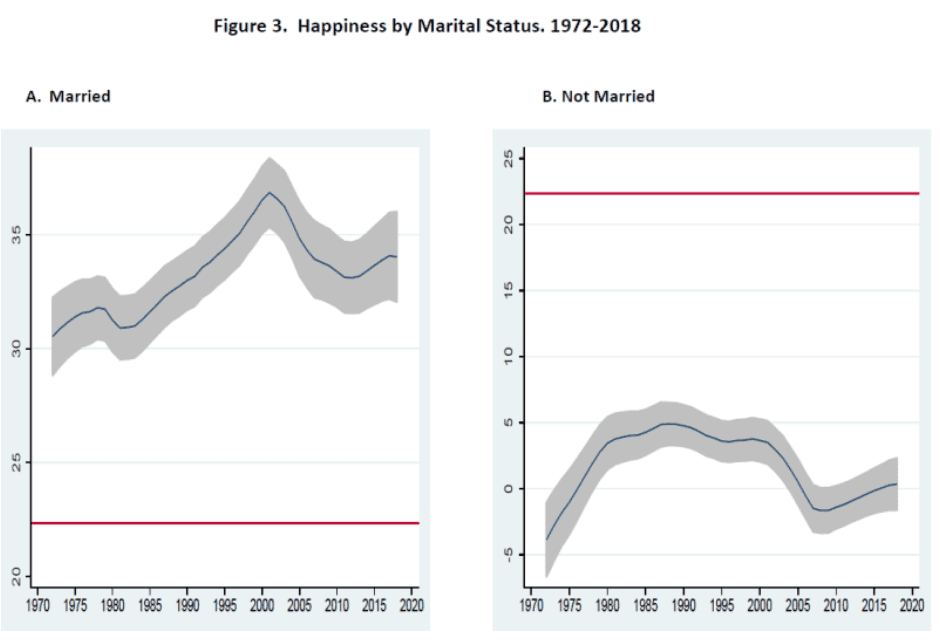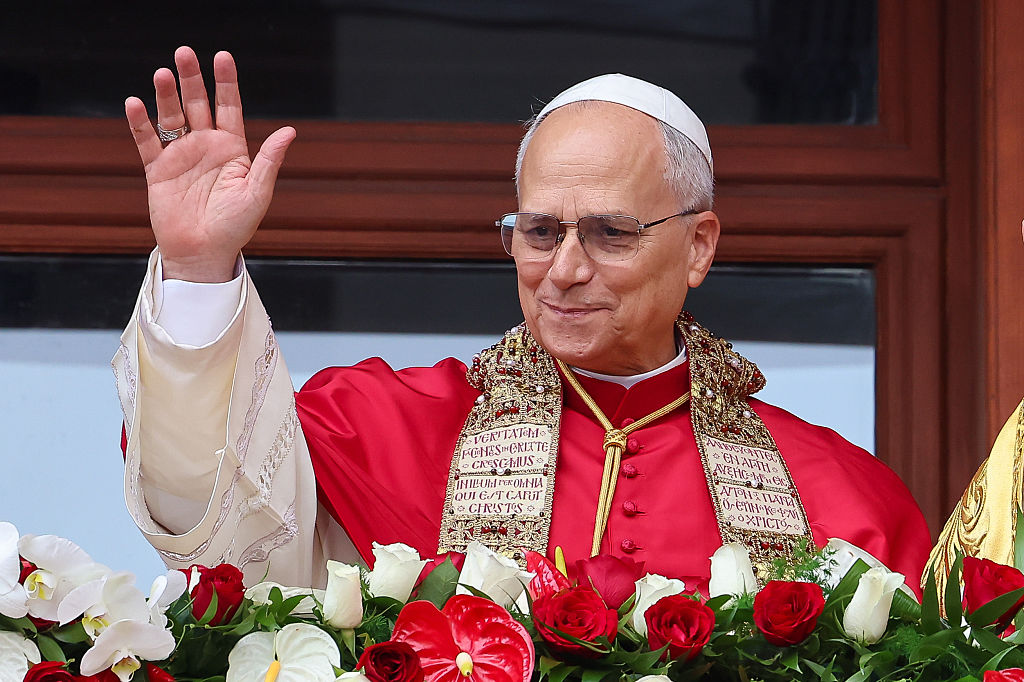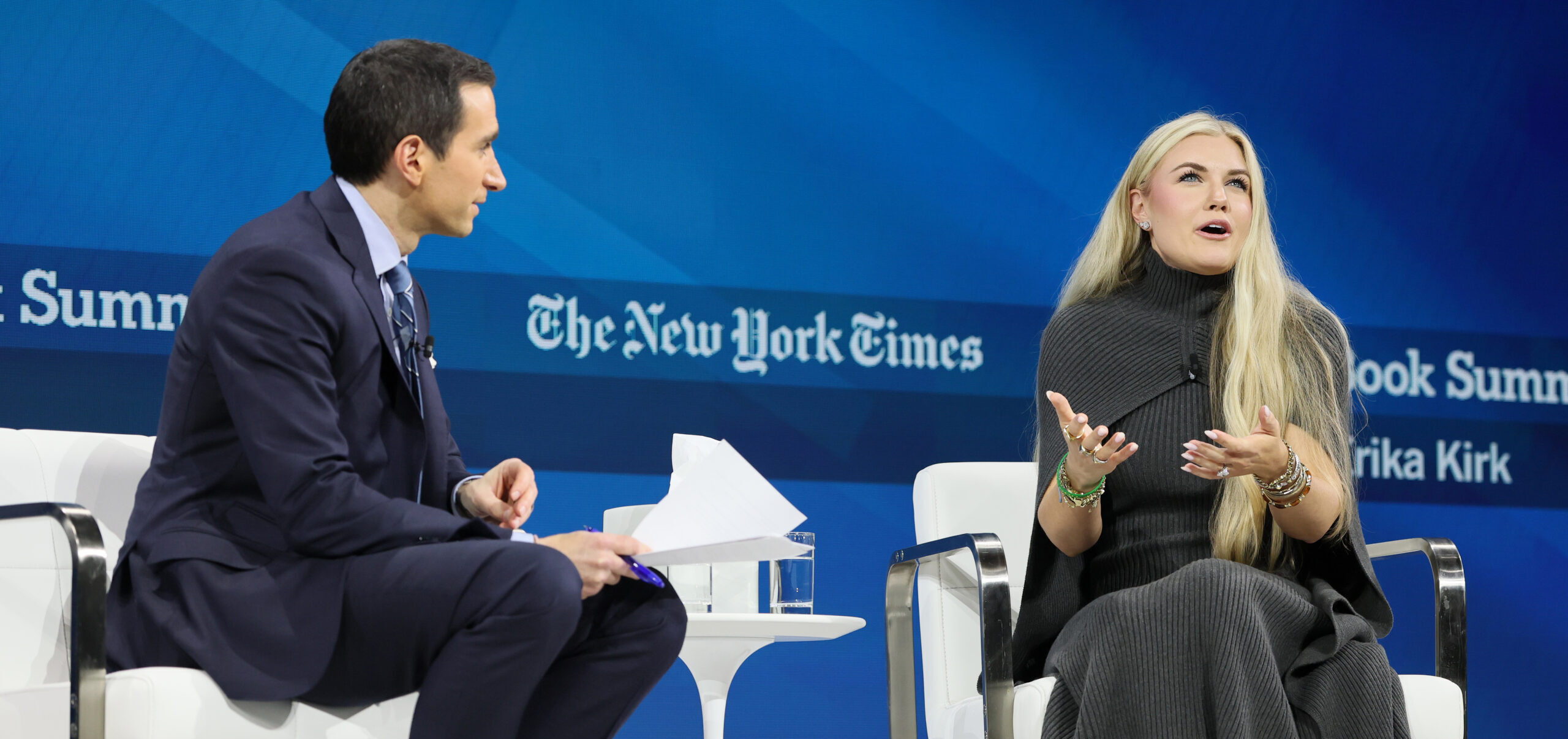New Research: Marriage Still Provides Major Happiness Premium

It is certainly a profound irony that more people should appreciate: While marriage rates have declined markedly over the last few decades, research continues to show a strong relationship between self-reported happiness and wearing a spouse’s wedding ring.
Going back to 2000, social science researchers Linda Waite and Maggie Gallagher have an entire chapter their book, The Case for Marriage, detailing how marriage boosts happiness for men and women. “When people married, their mental health improved – consistently and substantially,” they explain.
James Q. Wilson, one of the leading deans of the social sciences, wrote in 2002 that “Married people are happier than unmarried ones of the same age, not only in the United States but in at least seventeen other countries where similar inquiries have been made.” Wilson notes, “there seem to be good reasons for that happiness,” given the strong health and well-being benefits marriage affords in contrast to being single, cohabitating or divorced.
Now, new research from esteemed scholar Sam Peltzman, professor emeritus of economics at the University of Chicago, demonstrates the happiness premium of marriage not only remains, but is actually getting stronger.
Professor Peltzman explains that “Being married is the most important differentiator with a 30-percentage point happy-unhappy gap over the unmarried” when compared to other socio-economic factors like age, race, sex, educational status, income and geographical location. Peltzman adds, “Conservatives are distinctly happier than liberals,” indicating married conservatives enjoy an even higher happiness dividend.
Both men and women experienced the marital happiness boost. Peltzman summarizes,
The happiness landslide comes entirely from the married. Low happiness characterizes all types of non-married. No subsequent population categorization will yield so large a difference in happiness across so many people.
Further, Peltzman asserts this benefit for married couples has been increasing overall, as demonstrated in these graphs.

Decline in Marriage, Decline in Happiness
Peltzman also found the connection between marriage and happiness is so strong that the “recent decline in the married share of adults can explain (statistically) most of the recent decline in overall happiness” in the general population.
This dramatic finding does not stand alone.
Jean Twenge, a leading San Diego State University social scientist, also confirmed Peltzman’s findings in an important essay for the Institute for Family Studies in 2020. She highlighted how marriage rates face a noted class divide with lower educated/lower income individuals much less likely to marry compared to their better educated, higher income peers.
Twenge explained, “This growing marriage gap matters for happiness because married people are happier than unmarried people by a fairly large margin.” Professor Twenge adds, “Over time, the number of unmarried people in the lower-SES (socio-economic status) group grew much faster than in the higher-SES group. The result: Less happiness among those with lower SES.”
The strength and consistency of this research condemns the popular “love is love” and “love wins” mantras. Not all love relationships are equal. The kind of relationship matters. The marriage of husband and wife provide essential life benefits that no other relational status can. Leading scientific examinations and reason consistently demonstrate this.
It is important that we help our young people, who are increasingly choosing cohabitation over marriage, understand the path to greater happiness is marked “married for life.” No other alternative relationship comes close.
Photo from Shutterstock
ABOUT THE AUTHOR

Glenn is the director of Global Family Formation Studies at Focus on the Family and debates and lectures extensively on the issues of gender, sexuality, marriage and parenting at universities and churches around the world. His latest books are "The Myth of the Dying Church" and “Loving My (LGBT) Neighbor: Being Friends in Grace and Truth." He is also a senior contributor for The Federalist.
Related Posts

Best Age to Marry? Good Research Offers an Answer
December 18, 2025

Vatican Reaffirms: Marriage is Between One Man and One Woman
December 1, 2025


